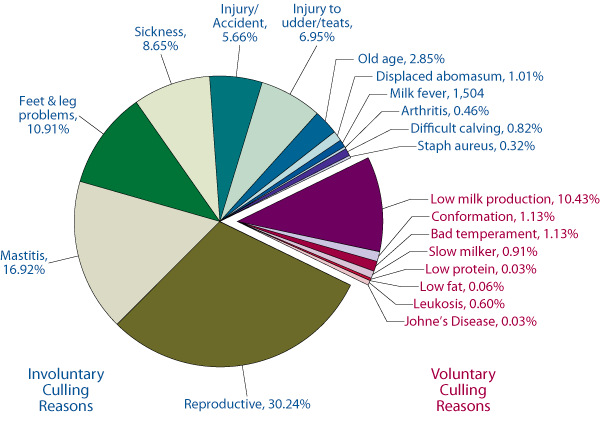The Importance of Hoof Health in Dairy Cattle
At a 2004 workshop sponsored by Alberta Milk, representatives from all facets of the Canadian dairy industry agreed that declining longevity was the most important current limitation to dairy cow productivity. The average age of cows culled from dairy herds in Ontario and the 4 western provinces is currently about 5.4 years. Since the average age at first calving in these herds is approximately 27 months, the productive life of the average cow is around 38 months.
The reasons that cows are culled from Canadian herds serviced by CanWest DHI are illustrated in the graph below. Reproductive failure, mastitis and feet and leg problems (lameness) together accounted for 58% of total culling; 68% of involuntary culling.

Although lameness is identified as the third most common primary reason for culling, many cows that are culled for reproductive failure have failed to become pregnant because of lameness. Lameness is also an indirect cause of culling for other infectious diseases such as mastitis, by reducing immunocompetence.
In addition to its direct and indirect effects on forced (involuntary) culling, lameness in cows remaining in the herd is costly in terms of milk production loss, reduced reproductive success and treatment costs. It has been estimated that, on average, an individual case of lameness costs the dairy operation approximately $400. Lameness is also the dairy industry’s most visible animal welfare problem.
Dairy cattle lameness is primarily due to structural damage to and/or infections of hoof (claw) tissues. The table below shows the prevalence of lesions causing lameness in a recent survey of Ontario herds as well as the proportion of herds in the survey that were affected by each type of lesion. The results are similar to those from a study of 20 free-stall herds in British Columbia’s Fraser Valley where, in 17 of the herds, more than 70% of the cows had at least one lesion. Lameness prevalence in other western Canadian herds is expected to mirror these results.